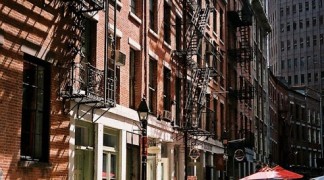FiDi stretches from the West Side Highway to the East River, from the tip of Manhattan to the Brooklyn Bridge and Park Place.
Downtown (or Lower) Manhattan has historically been—and still remains—the City’s primary business district. In fact the term Downtown is thought to have been coined in New York City, where it was in use by the 1830s to refer to the original town at the southern tip of the island of Manhattan.

As the town of New York grew into a city, the only direction it could grow on the island was north, proceeding upriver from the original settlement. Thus, anything north of the original town became known as Uptown while the original town (which was also New York’s only major center of business at the time) became known as Downtown. The terror cast over Lower Manhattan by the attacks of September 11, 2001 was surprisingly brief because of the City’s resolve to rebuild and attract residents and businesses to the area. Despite prolonged controversies over the design of a rebuilt Ground Zero, Lower Manhattan began to pulse with new activity as old office buildings were converted to condo apartment buildings. These feature amenities such as gyms, concierges, and computer systems that e-mail you when your dry cleaning has arrived. Top rental buildings have modern lounges for socializing and awesome roof decks, with views to match. The new luxury high-rises have joined such classic Financial District conversions as the former Cotton Exchange or Cocoa Exchange.The South Street Seaport and the Brooklyn Bridge along the East River offer a fantastic variety of shops, cafes, hotels and restaurants as well as regularly scheduled concerts, boat rides and other activities, which adds to its ability to attract an influx of new residents, putting Lower Manhattan well on its way to becoming a vibrant mixed-use community with its own character.Favorite restaurants in the area are: the historic Delmonico’s, Cipriani and Bobby Van’s Steakhouse.


